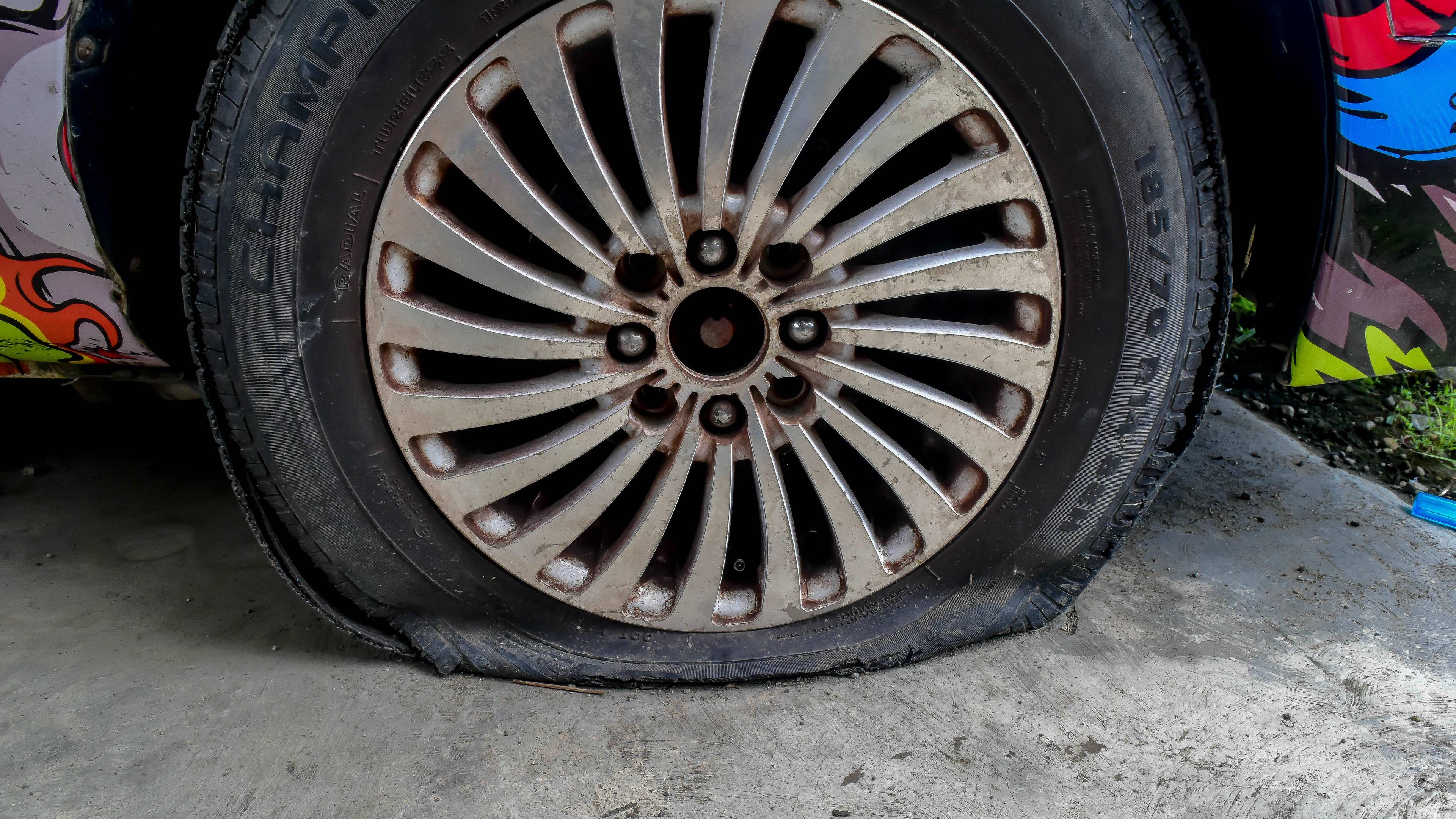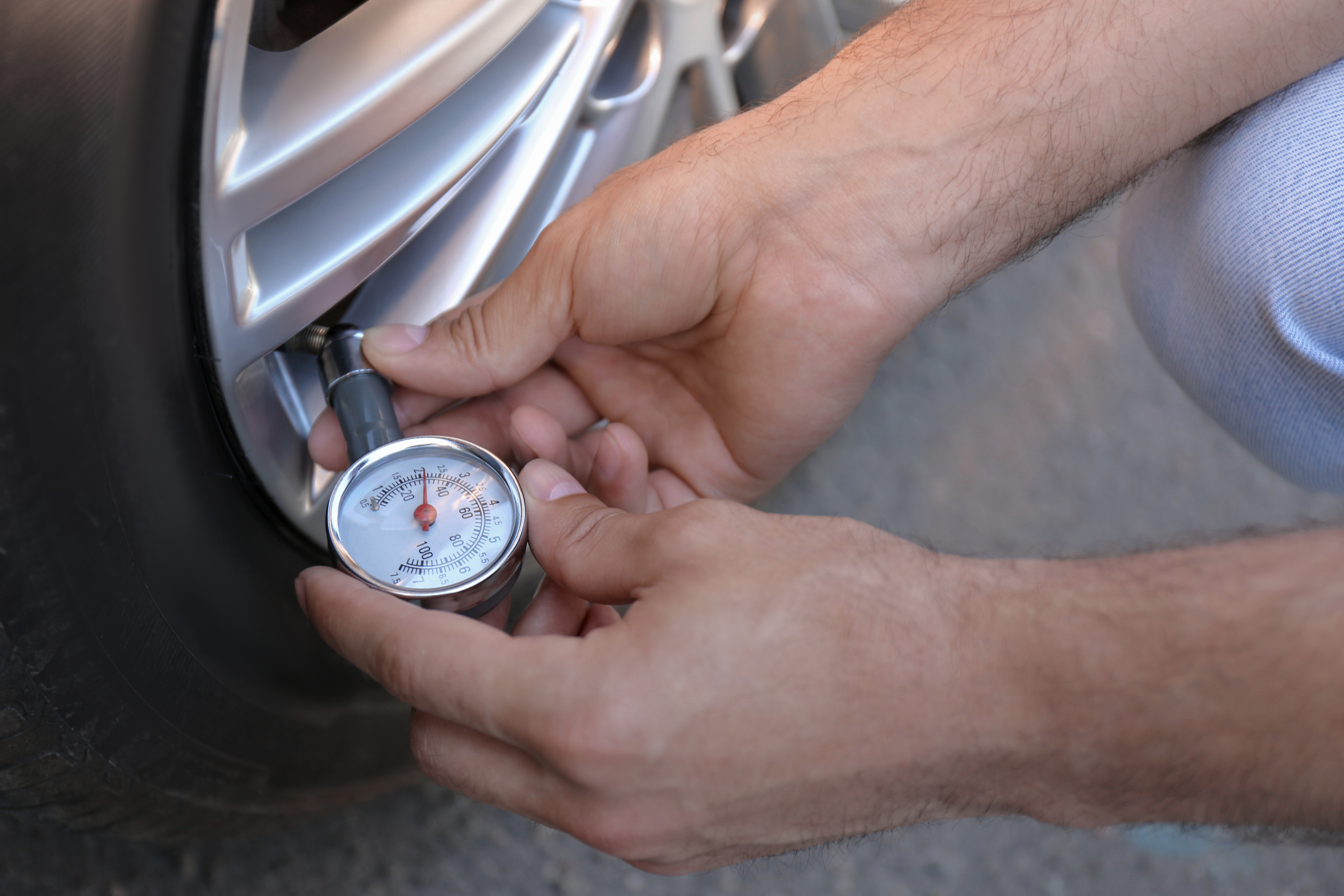Tire maintenance & safety
How to check tire pressure: 7-step DIY guide

Free shipping
Best price guarantee
Special pricing
Financing with Resolve
Easy returns
Tire maintenance & safety


Maintaining proper tire pressure is a crucial aspect of vehicle safety and performance that is often overlooked by many drivers. Neglecting to check and adjust tire pressure regularly can lead to a host of problems, from decreased fuel efficiency to increased risk of accidents.
Tire pressure plays a vital role in how a vehicle handles, brakes, and performs in various weather conditions. Ensuring that your tires are inflated to the manufacturer's recommended pressure can help you save money at the pump, extend the life of your tires, and keep you and your passengers safe on the road.
In this article, we'll dive into the importance of adjusting tire pressure and provide a step-by-step guide on how to do it correctly. By the end, you'll have the knowledge and tools necessary to maintain your tires and enjoy a safer, more efficient driving experience.
Properly inflated tires are essential for maintaining optimal vehicle performance and safety. When tires are inflated to the manufacturer's recommended pressure, they provide the best balance of handling, braking, and fuel efficiency. Underinflated tires can cause a variety of issues, including:
On the other hand, overinflated tires can also cause problems. While they may provide slightly better fuel efficiency, overinflated tires can:
To ensure your tires are performing at their best, it's crucial to check and adjust their pressure regularly. Experts recommend checking tire pressure at least once a month and before any long trips. By taking a few minutes to maintain proper tire inflation, you can improve your vehicle's safety, performance, and efficiency—ultimately saving you money and providing peace of mind on the road.
Identifying the correct tire pressure for your vehicle is straightforward yet essential for optimal performance. The manufacturer's specified tire pressure can usually be found on a sticker located in the driver's side door area. Additionally, this information is detailed in the vehicle's owner manual, offering guidance specific to your car model.
Pay attention to the fact that the pressure requirements may vary between the front and rear tires. This distinction takes into account the unique weight distribution and handling characteristics of your vehicle. Ensuring each tire is inflated according to its designated pressure supports balanced handling and even tire wear, contributing significantly to safety and efficiency.
It is crucial to measure tire pressure when the tires are at ambient temperature. This practice ensures an accurate reading, as driving causes tires to heat up and temporarily increase pressure. For best results, check and adjust tire pressure in the morning or after the vehicle has been stationary for some time, aligning with the manufacturer's baseline conditions for tire performance.
Selecting a precise tire pressure gauge is essential for maintaining your vehicle's tire health. Digital gauges offer the advantage of clear, digital readouts, often featuring a backlight for visibility in low-light conditions. These tools are compact and provide quick, accurate measurements. Alternatively, stick gauges, renowned for their simplicity, offer a robust mechanical alternative. Whichever gauge you opt for, ensure it is known for reliability and consistent performance.
To measure tire pressure effectively, start by unscrewing the valve cap from the tire and placing it in a secure spot. Position the gauge firmly over the valve stem to capture an accurate reading without air escaping. A firm fit is vital, as any air loss can compromise the accuracy of your measurement, leading to improper adjustments.
Once the gauge indicates the current pressure, compare it to the vehicle's specified pressures. Should the measurement deviate from the recommended levels, adjustments will be necessary to bring the tire pressure within the optimal range. This practice not only enhances tire efficiency but also supports a safe and smooth driving experience.
Start by gently twisting off the protective cap from the tire's air valve. Keep the cap in a secure place to ensure it doesn't roll away. With the valve stem exposed, firmly attach the tire pressure gauge. Achieving a snug fit is crucial to prevent any air from leaking out as you measure.
After obtaining the pressure reading, align it with the vehicle’s specified tire pressure found on the sticker inside the driver’s door or in the owner’s manual. This specification is often displayed in pounds per square inch (PSI) or kilopascals (kPa), contingent upon regional preferences. Familiarizing yourself with these units ensures precise adjustments.
Identify any differences between the current pressure and the recommended levels. Noticing these variations promptly allows you to address potential problems, maintaining optimal tire performance and safety. Regular monitoring supports even tire wear, contributing to a dependable and comfortable driving experience.
To raise tire pressure that falls below the recommended level, employ an air compressor. Many stations provide air filling services with simple-to-use PSI settings, allowing for straightforward inflation. Secure the air hose over the valve stem as you did with the gauge, ensuring no air escapes during the process. Add air gradually, pausing to check with your gauge to track progress toward the desired PSI. This careful approach ensures optimal tire contact with the road for improved safety and performance.
If a tire reads above the recommended pressure, releasing air is necessary. Gently press the valve stem pin using the back of the gauge to let out air slowly, checking frequently with your gauge to maintain control over the pressure drop. This method prevents over-correction, preserving tire integrity and ensuring balanced vehicle handling by avoiding excess pressure that could lead to uneven wear.
For precision in achieving the correct pressure, a tire pressure calculator can be invaluable. Inputting your tire's current pressure and the recommended PSI provides tailored guidance for adjustments. This tool assists in fine-tuning the balance for your tires, accounting for specific driving demands and tire characteristics, thus enhancing both safety and efficiency.
Once adjustments are made, it's crucial to verify the precision of your work. Employ your tire pressure gauge to ensure each tire meets the specified pressure levels set by the manufacturer. This step affirms the effectiveness of your adjustments, guaranteeing that each tire supports the vehicle's performance and safety standards. Uniformity in tire pressure across all wheels contributes to consistent handling and stability.
With the correct pressure confirmed, ensure the valve stem is protected by reattaching the cap. While small, the valve cap acts as a safeguard against dirt and moisture intrusion, which can lead to gradual air leaks if left unchecked. Securely fastening the cap is an easy yet vital step in preserving tire integrity.
Apply this meticulous process to every tire on the vehicle, remembering the spare. The spare tire should be ready for unexpected situations, and maintaining its pressure is equally important. By diligently attending to each tire, you enhance the vehicle's dependability and ensure preparedness for the road ahead.
Consistently monitoring your tire pressure is crucial for maintaining optimal performance and safety. Conduct tire checks monthly to catch any gradual changes that could affect handling or efficiency. By keeping each tire within the specified PSI range, you ensure that your vehicle remains responsive and balanced, reducing the risk of uneven wear or unexpected tire issues.
Before a long journey, verify that each tire is properly inflated. Long trips can expose your vehicle to diverse road conditions and varying speeds, which can impact tire integrity. Ensuring correct pressure before departure enhances fuel economy and safeguards against potential disruptions during travel.
Temperature variations can lead to significant changes in tire pressure. Colder weather often results in lower tire pressure, requiring additional air to maintain stability. Warmer conditions, however, can cause the air inside tires to expand, potentially leading to overinflation. These temperature-induced fluctuations highlight the need for seasonal adjustments to tire pressure to ensure consistent performance.
Adapting to these temperature shifts helps maintain the recommended pressure range throughout the year. This proactive approach not only promotes tire longevity but also ensures reliability and safety in different climatic conditions.
Tire Pressure Monitoring Systems (TPMS) offer an effective way to keep track of tire pressure without manual checks. Many vehicles today include TPMS, which continuously assesses tire pressure and alerts drivers to any significant deviations. This system provides timely notifications, allowing for quick corrective actions to prevent safety hazards.
When the TPMS indicator lights up on your dashboard, it's important to address the issue promptly by checking and adjusting your tire pressure. Utilizing this technology enhances awareness of tire conditions and supports a proactive maintenance routine, contributing to overall vehicle safety.
By prioritizing tire pressure maintenance, you invest in the safety, efficiency, and longevity of your vehicle. We at SimpleTire are committed to providing you with the tools and knowledge needed to make informed decisions about your tires. Shop for tires online with us and find the best deals, ensuring a seamless and reliable tire buying experience.
Search By